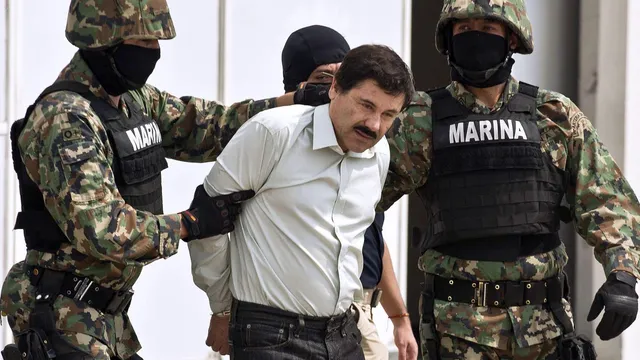
Sinaloa cartel hacker tracks and kills FBI informants using surveillance tech
2025-07-01 11:15- In 2018, a hacker working for the Sinaloa Cartel successfully infiltrated an FBI employee's communication systems.
- The cartel employed this information to track the FBI official and locate potential informants, leading to intimidation and deaths.
- This incident underscores the increasing threat of advanced technology in aiding criminal enterprises against law enforcement efforts.
Express your sentiment!
Insights
In 2018, a hacker engaged by the Sinaloa Cartel exploited advanced surveillance technology to harm potential FBI informants in Mexico. By obtaining sensitive data from an FBI official’s phone records, including call logs and geolocation, the hacker was able to map the movements of the FBI’s Assistant Legal Attaché and monitor interactions with informants. Utilizing the surveillance camera system of Mexico City, the cartel tracked this FBI agent’s activities, identifying whom they met. This culmination of technical surveillance and phone hacking was detailed in a new report by the Justice Department Inspector General, shedding light on how drug cartels exploit technology to further their illicit activities and threaten law enforcement officials. The report criticizes the implications this has on the safety of informants, noting that the cartel used the gathered information to intimidate and murder cooperating witnesses. The circumstances surrounding this incident illustrate the challenges U.S. law enforcement face against sophisticated technological operations from violent drug cartels. The Sinaloa Cartel, labeled a terrorist organization by the Trump administration, remains one of the most powerful entities in global drug trafficking, particularly in the production and distribution of deadly substances like fentanyl, penetrating deeply into U.S. markets. The findings of the audit raise significant concerns regarding the FBI's operational security amid a narrative of increasing risks posed by technical advancements perceived as existential threats to national security. FBI and other agencies are urged to reassess their operational protocols to safeguard sensitive information from adversaries armed with advanced surveillance capabilities.
Contexts
The Sinaloa Cartel, one of the most powerful and influential drug trafficking organizations globally, has increasingly employed advanced technologies to enhance its operational capabilities and counter law enforcement initiatives. This report examines the different types of technology utilized by the cartel, highlighting their implications for law enforcement agencies tasked with combating drug-related crime. The use of technology by the Sinaloa Cartel reflects a sophisticated approach to organized crime, where traditional methods are supplemented by innovative tools that can improve coordination, communication, and evasion tactics against rivals and authorities alike. One of the primary technologies leveraged by the Sinaloa Cartel includes surveillance and counter-surveillance systems. These technologies enable the organization to monitor law enforcement activities, plan drug shipments, and maintain the safety of its members. The cartel has reportedly used drones for aerial surveillance, allowing them to gather intelligence on law enforcement operations, track movements, and detect threats from rival gangs. Furthermore, the cartel has shown proficiency in employing encrypted communication platforms to secure operational discussions, thereby minimizing the risk of interception by law enforcement agencies. This use of technology represents a significant shift in cartel operations, where maintaining operational security is paramount. In addition to communication and surveillance tools, the Sinaloa Cartel has integrated sophisticated logistics software into their drug trafficking operations. This technology aids in optimizing supply chains, managing transportation networks, and coordinating the movement of large quantities of narcotics across borders. The use of GPS tracking systems not only ensures the timely delivery of drugs but also facilitates the cartel's ability to evade capture by strategically altering routes and locations based on real-time intelligence. This level of logistics sophistication presents a considerable challenge for law enforcement, as it complicates the detection and interdiction of drug shipments. Finally, as law enforcement adapts to the technological advancements employed by the Sinaloa Cartel, the latter's continuous innovation poses an ongoing threat to public safety and security. The cartel's ability to harness modern technology not only enhances their operational effectiveness but also underscores the need for law enforcement agencies to invest in similar technologies and adopt advanced strategies to counteract these criminal activities. Intelligence sharing, interdisciplinary collaboration, and an emphasis on technological adaptation will be crucial for law enforcement as they seek to stay one step ahead in this ever-evolving landscape of organized crime.